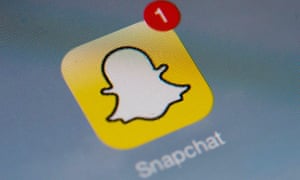
This article discusses the potential of Snapchat becoming a direct competitor in the advertising world due to advertisers targeting the youth audience. The advertising industry is currently dominated by Facebook and Google, which have recently come in for heavy criticism for their advertising practices as they currently dominant the industry by accounting for 58% of the $141bn global mobile ad market. Cathy Boyle, principal analyst at eMarketer, which produced the global mobile ad forecast suggests that“If there can be a third or fourth player they are interested in spreading the wealth beyond the duopoly.” However, the article also highlights the threats that Snapchat may face. Facebook, which dominates social media with 1.2 billion daily users and owns Snapchat’s most direct competitor, Instagram. Instagram had recently introduced a new function called stories, which is similar to Snapchat’s own story feature. Instagram Stories has already achieved 150 million daily active users. Also, snapchat's growth has seemed to slow down. The number of Snapchat users grew by 14% and 17% in the first two quarters of last year. Following the launch of Instagram Stories, Snapchat’s growth slumped to 7% and just 3.2% in the final two quarters of 2016. Overall, Snapchat has great potential for success in the advertising industry especially due to its young audience demographics.
- More than half (51%) of video users on Snapchat are under 24, compared with 23% for Facebook and 17% for Google’s YouTube, according to Ampere Analysis.
- The average daily user visits the app 18 times a day, spending an average of 25 to 30 minutes a day sending snaps and watching messages from their friends, celebrities and advertising brands.
I agree with the article in terms of the fact that the mobile advertising industry should take advantage of Snapchats target audience as there is great potential for Snapchat to be successful and take over the dominating space of large social media sites such as Facebook. However they should be wary of the tactics used by their competition and their slowing growth.
I agree with this article because traditional forms of media such as the cinema will always guarantee greater quality as films are intended for cinemas, and not TV screens.

No comments:
Post a Comment